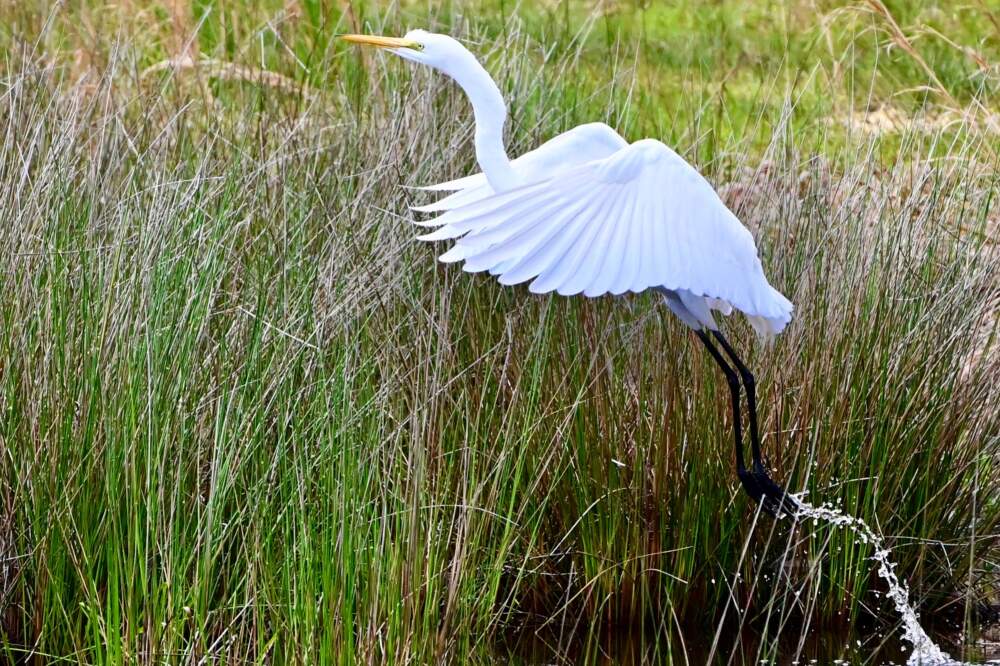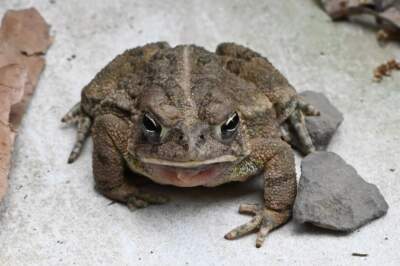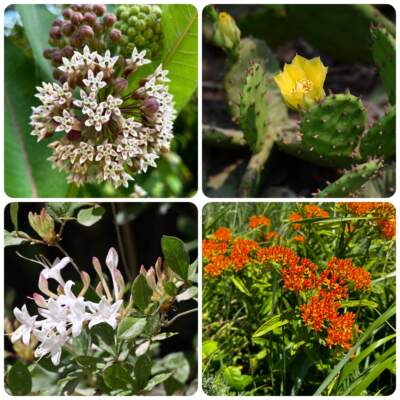Advertisement
Commentary
What Mass. can learn about saving the planet — from New Jersey

Like all native New Jerseyans, I bear a lifelong cross of pollution and which-exit-are-you-from cracks about my home state. To wit: Why is New Jersey called the Garden State? Because Oil, Petroleum, Nuclear, Landfill and Toxic Waste State won’t fit on a license plate. In response, I’d like to make three points for the record.
My admittedly privileged upbringing, though mottled with life’s usual growing pains, was hardly purgatory. Thank you very much.
Including “nuclear” in that joke maligns a necessary climate change remedy.
And New Jersey, the most densely populated state in the nation, tucked between the metropolises of New York and Philadelphia, contains an Eden of abundant, biodiverse and endangered species. They include carnivorous plants most of us associate with faraway jungles, plants so exotic they startled the Vox writer who recently profiled Jersey’s crown jewel, the million-acre Pinelands.
This third point offers a powerful tutorial for salvaging biodiversity elsewhere, an increasingly imperiled proposition.

In June, researchers reported that in 2022 the world hemorrhaged more than 10 million acres of primary rainforest – an expanse roughly equal to the size of Switzerland – due to factors ranging from fires to deforestation. This is, in a word, awful: Trees sponge carbon from the atmosphere and shelter an array of animals and plants. The lost acreage exceeded 2021’s forest losses by 10%.
According to the New York Times, Brazil’s Amazon rainforest, the largest in the world, was particularly hard hit and “hasn’t faced such enormous destruction in almost two decades.” The Brazilian Trump, former president Jair Bolsonaro, would have replaced soccer with clear-cutting as the national pastime if only subverting democracy hadn’t been so time-consuming.
The Pinelands, however, remain unmolested by human intrusion – mostly. They are home to more than 1,000 plant species (not to mention, for fans of “The X-Files,” the mythological Jersey Devil). Among those plant species are carnivorous plants “thriving in the most unlikely place,” the intrigued folks at Vox reported. Take, for example, the bladderwort, which gobbles insects faster than any known carnivore among flora. The plant deploys tiny, underwater sacs or bladders that vacuum up unwary bugs in less than a millisecond, then acidifies them.
Other carnivorous species include pitcher plants and sundews. Birders, meanwhile, can savor 144 species of their favorite creature in the Pinelands. Teeny tree frogs, foxes, otters, lemmings and other animals — 34 species of mammals and 54 of reptiles and amphibians — hop, slither, swim, cling to and hide among and in the pines, streams and rivers of this vast ecosystem.
The near-pristine preservation of the Pinelands is due, at least in part, to the God-given luck of topography. The soil floor is full of nutrient-sparse sand that, Vox notes, forced centuries of farmers to cultivate crops elsewhere while deflecting invasive species that could harm the region’s native wildlife, which is hardy and deals with unhealthy soil by, for example, eating bugs for nutrition.
That said, much of the Pinelands is privately owned. But smart policy has saved it since the Carter administration, when Congress designated it as the country’s first National Reserve. New Jersey promptly created a state commission to manage it. Ultimately, the state paid landowners to preserve their land, making them friends rather than foes of conservation. As nothing succeeds like success, other states and Joe Biden have latched onto this approach. Public-private collaboration is Lesson One of the Pinelands.

A lot of people across the spectrum need to learn it. Market fundamentalists disdain environmentalism as death for growth and job creation, while some fanatic progressives potty-mouth capitalism as inevitably poisoning the planet. Au contraire, say World Bank researchers: Green growth is no oxymoron, but achieving it demands – among other things – preserving carbon-capturing, biodiversity-bolstering forests.
That brings us to Lesson Two. Even the Pinelands face threats: Development has leveled forests in unprotected areas near this ecological gem. Meanwhile, according to the watchdog Pinelands Preservation Alliance, humans cause other problems:
State Forests and other preserves in the Pinelands are being devastated by unlawful off-road vehicle activities, suppression of natural forest processes, poaching of rare plants and wildlife, and dumping of trash and chemicals. The abuses have grown while the funds devoted to law enforcement and conservation agencies to protect public lands from these depredations have shrunk.
To the obvious solution of boosting funding for those purposes, the Alliance adds a less obvious suggestion that advocates of endangered spaces elsewhere would do well to heed: Encourage less damaging human interaction with these precious ecosystems, too.
People won’t protect that which they don’t know about and thus see no value in. (Full disclosure: This proud native New Jerseyan has never visited the Pinelands.) Both state- and nonprofit-managed sections of the Pinelands have hiking trails (some accessible to wheelchairs and walkers), streams for kayaking and canoeing, biking routes, and camping sites. An Alliance representative told Vox that the state should provide public transportation to and free nature tours of the pine forest and wetland.
The movies told us that if you build it, they will come. The Pinelands suggest that saving biodiversity takes a different tack: If you show it, they will come. And they just might leave determined to protect the glorious creation that they’ve glimpsed.
